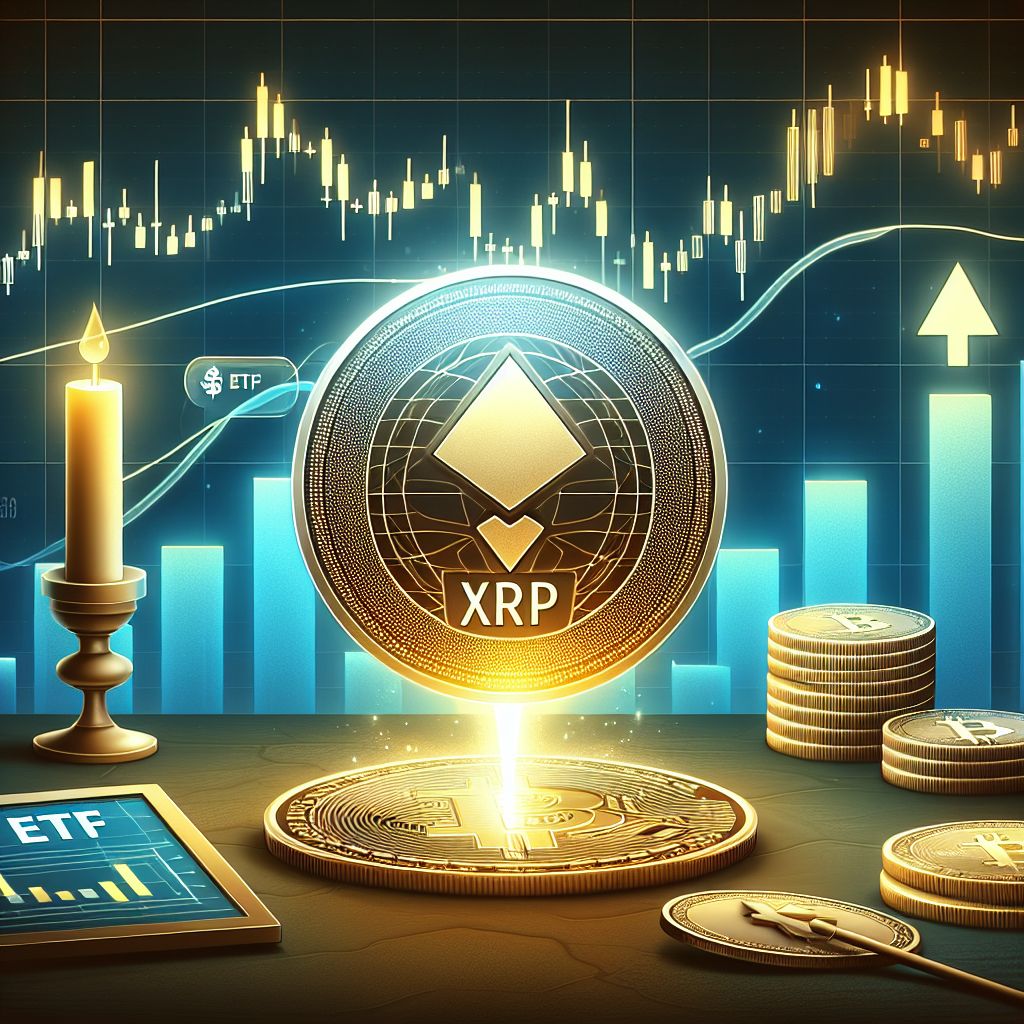Major spot XRP ETFs accelerate institutional adoption in 2025
In late 2025, a wave of spot exchange‑traded funds (ETFs) focused on XRP entered regulated markets, marking a notable shift in institutional access to the digital asset. The launches followed a period of regulatory uncertainty that eased earlier in 2025, and they were accompanied by price appreciation, increased trading activity and renewed conversations about XRP’s role in cross‑border payments and settlement infrastructure.

Industry observers viewed the combination of regulatory clarity and mainstream fund products as a milestone for market maturity. For institutions and long‑term investors, ETFs present a familiar, regulated vehicle to gain exposure without the operational overhead of holding the underlying token directly.
What the new spot ETFs offer
The newly introduced spot XRP ETFs are structured to track the on‑chain token price via reference rates and to hold the underlying asset in custody on behalf of investors. Key features commonly highlighted in product documents include:
- Direct exposure to XRP without requiring investors to manage private keys.
- Transparent pricing that references recognized market rates.
- Custodial arrangements intended to meet institutional standards for security and auditability.
- Regulatory disclosure and periodic reporting consistent with listed fund requirements.
These characteristics make spot ETFs appealing to a broad range of market participants, from wealth managers and pension funds to corporate treasuries seeking tasteful exposure to digital‑asset ledger utility rather than purely speculative positions.
Benefits for institutional investors
- Simplified operational model compared with self‑custody.
- Access to regulated trading venues and familiar settlement processes.
- Ability to incorporate XRP exposure into diversified portfolios using existing investment frameworks.
Regulatory developments in 2025 that opened the door
A pivotal regulatory development during 2025 reduced legal uncertainty surrounding XRP and related products. The resolution of long‑running regulatory questions provided asset managers the compliance assurance needed to file and list spot ETFs. Market participants reported that finalization of that process removed a major obstacle to mainstream product development.
Regulatory clarity did not eliminate all legal or jurisdictional risks—prospectuses and regulatory filings continue to note the potential for shifting interpretations in different markets. Nonetheless, the overall effect has been to unlock capital that had been waiting on the sidelines for a durable compliance framework.
Market reaction and trading dynamics
The ETF launches coincided with a sharp market reaction: prices rose materially in the hours and days following announcements as buy‑side demand increased and derivatives positioning adjusted. On the liquidity side, exchanges and custodians reported higher volumes and wider participation from institutional desks and professional market makers.
Several market signals point to deeper institutional involvement:
- Rising futures open interest and options activity tied to XRP, suggesting growing hedging and speculative flows.
- Increase in large block trades and over‑the‑counter (OTC) desks facilitating sizeable allocations into regulated products.
- Improved price discovery as more regulated venues contribute to reference rates used by funds.
While short‑term volatility remains a feature of the market, the introduction of regulated ETF liquidity may dampen intraday swings over time by broadening the investor base and improving market depth.
Why institutions are eyeing XRP
Several technical and economic factors make XRP attractive to institutions evaluating payments and settlement use cases:
- Speed: The ledger can settle transactions in seconds, offering a faster alternative to many traditional cross‑border rails.
- Low transaction costs: Economies of scale and the ledger’s design can yield cost advantages for high‑volume transfers.
- Energy efficiency: Consensus mechanisms built for payments tend to have lower energy footprints than proof‑of‑work systems.
- Interoperability potential: XRP and the underlying ledger are often highlighted as potential bridges between fiat currencies and digital assets.
These attributes have drawn attention from corporate treasurers, fintech firms and payment providers exploring ways to reduce settlement times and costs in international corridors.
Use cases beyond store of value
Unlike assets frequently positioned as digital stores of value, XRP’s narrative is tied closely to transactional utility. That distinction influences how funds and institutional investors evaluate its role within broader portfolios—often as a specialist exposure linked to payments infrastructure rather than a pure macro hedge.
Geopolitical and cross‑border payment implications
The conversations about XRP’s role are not purely technical. Geopolitical trends and policy discussions in 2025 emphasized the need for more efficient cross‑border settlement options, particularly among emerging market corridors.
Multilateral forums and regional development institutions have publicly discussed support for digital settlement initiatives and API‑based linkages between payment systems. While direct on‑chain adoption varies by jurisdiction, the momentum behind digitalizing cross‑border payments aligns with the core design goals of payment‑focused ledgers.
Some analysts have noted potential exposure to XRP via regional financial architectures or partnerships with fintech providers. However, national policies, capital controls and regulatory frameworks still dictate the pace and shape of any formal integration into sovereign or banking infrastructure.
Risks and considerations for investors
Even as institutional products expand, investors should weigh several key risks:
- Volatility: XRP has historically exhibited substantial price swings, which can affect ETF performance and investor returns.
- Concentration: Spot ETFs that hold only XRP expose investors to single‑asset risk and lack diversification benefits found in multi‑asset funds.
- Regulatory divergence: While domestic regulatory clarity improved in 2025, cross‑border and future regulatory changes could still impact trading and custody arrangements.
- Operational risks: Custody solutions, reconciliation and audit processes remain critical—particularly for large institutional exposures.
Prospective investors should review prospectuses carefully, assess custody arrangements, and consider how a spot XRP allocation fits within overall portfolio objectives and risk tolerances.
Looking ahead: liquidity, product evolution and 2025 market context
As 2025 draws to a close, several trends are likely to shape XRP’s market structure and investor uptake:
- ETF inflows and the development of institutional custody will continue to deepen liquidity on major trading venues.
- New derivatives and clearing functionality may emerge to support hedging needs tied to spot products.
- Cross‑listing of products across regions could broaden access but will require alignment with local regulatory regimes.
- Product innovation—such as multi‑asset funds combining payments‑focused tokens with traditional financial exposures—may attract diversified institutional demand.
For trading venues and liquidity providers, the arrival of spot ETFs presents both an opportunity and an obligation to uphold robust market surveillance, custody standards and best‑execution practices. Exchanges that support regulated derivatives, custody integrations and institutional onboarding will play an important role in sustaining orderly market growth.
Conclusion
The introduction of spot XRP ETFs in 2025 represents a meaningful step in the maturation of digital assets as an investable class. By offering regulated access to a payments‑focused token, these funds provide institutions and retail investors with a new way to participate in on‑chain utility without the operational burdens of direct custody.
While the market reaction has been positive, long‑term adoption will depend on continued regulatory clarity, product integrity, and demonstrable use cases that drive sustainable demand. For market participants, the key questions for 2026 will center on how ETF inflows reshape liquidity, whether new custodial and clearing frameworks can scale, and how on‑chain payment solutions integrate with existing financial infrastructure.
As the industry evolves, careful risk management and transparent disclosures will remain essential for investors and intermediaries navigating this next phase of digital‑asset adoption.
Disclaimer: This post is a compilation of publicly available information.
MEXC does not verify or guarantee the accuracy of third-party content.
Readers should conduct their own research before making any investment or participation decisions.
Join MEXC and Get up to $10,000 Bonus!
Sign Up


